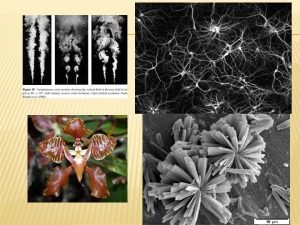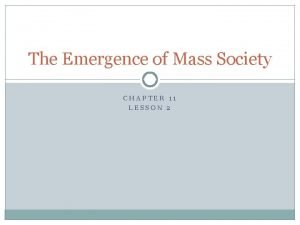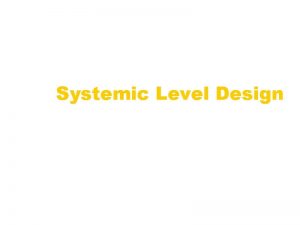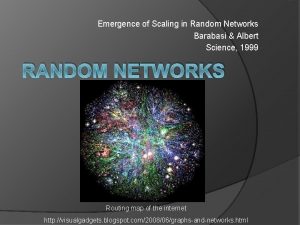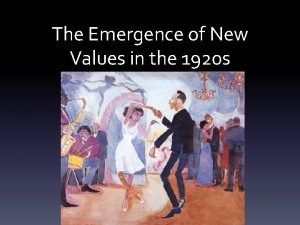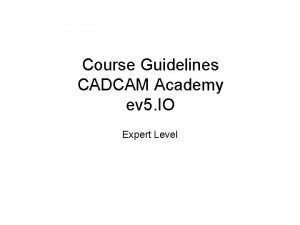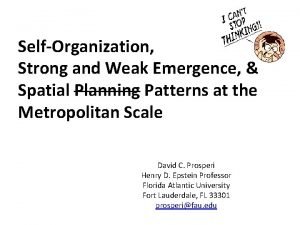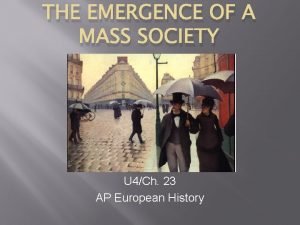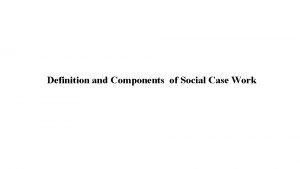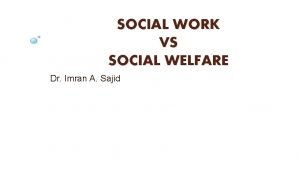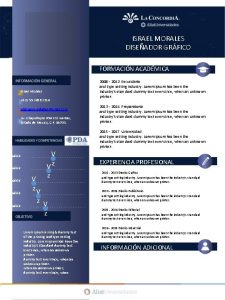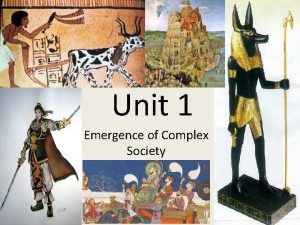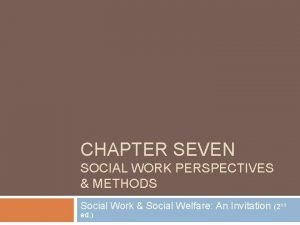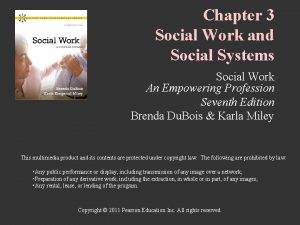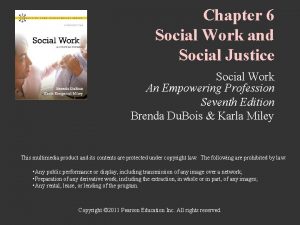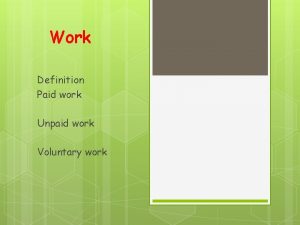Chapter 4 Morales The Emergence of Social Work

















- Slides: 17

Chapter 4 Morales The Emergence of Social Work as a Profession

Faces of Social Work

Introduction l Social Work development was not a planned event; however the evolution of social work was based on human needs and social problems.

The Nature of Professions l l Wilbert Moore concluded in order to have an occupation considered a profession or to have one’s occupation conduct judged as professional is highly regarded in all post industrial societies and in at least the modernizing sector of others. Professions… have been given a status of authority in the area they work.

l 3 Unique Characteristics of an Occupation that are considered to be a Profession – 1 professionals must be free from constraints that would limit them how to best assist a person in the situation (Professional Autonomy). This becomes increasingly more difficult – with insurance companies today. How do we deal with this as SW? Professional Authority- this given to inds who have the knowledge and skills for their profession. This allows these professionals to make judgments or give recommendations. Society expects and trust they have a certain level of competency. Professional Responsibility- professional are expect to be held accountable for their judgments and recommendations. Professional are expected to have a code of behaviors/ethic. – –

How does a professional receive this recognition? – – – Pavalko attributes: pg 54 Can you identify where these are in the SW profession? Wilensky – when developing a profession these attributes should be followedl l Pg 55 - Are these similar or different from the above? These attribute best describe the evolution of SW as a profession.

Social Work /Historical Perspective l SW evolved thru a series of events. Among these settlement patterns, war, international conditions, economic fluctuation, political leaders… l Table 4. 1 - lets look at and discuss! (pg 57)

Volunteer to an occupation l As discussed in Ginsberg- SW services were first started and conducted by volunteers (natural helpers) who recognized a need in society. l These needs in the US were basic needs and mutual aid was given by these volunteers. l As the needs grew and agencies developed training was needed for volunteers, thus a occupation emerged. – First paid SW was for Special Relief Department of the US Sanitary Commission during the Civil War. What was going on during this period? Lets look at the events up to 1915.

Professional Emergence (1915 -1950) l SW now considered an occupation turned its efforts towards defining itself as a profession. – Flexer challenged that SW was not a profession because it did not have these 6 traits: l l l 1 - Intellectual operation with large ind responsibility 2 - Derive their raw materials from science and learning 3 - This material is worked up to be practical and clear-cut 4 - Educationally communicable technique 5 - Self-organized 6 - Become increase altruistic in motivation

l Mary Richmond responded to this critique by Flexer and attempted to develop a code of ethics. – – – The code was primary aimed towards case workers and was drafted and discussed at the National Conference of Social Workers in 1923. It represented the beginning formation of professional ethics for SW. A large effort was devoted to self-organization. The National Social Worker Exchange was opened in 1917 to provide vocational counseling and placement. Later this function was taken over by American Association of Social Worker (1921) Pg 67 list the chronological order of specialized groups.

l These various association made it a little unclear if SW was 1 or many professions. (Association of Training Schools) l This occurred when sw was agency training focused not based in training thru higher institutions. – – – American Association School of Social Work (AASSW) educational standards for undergraduate degrees and graduate degrees. However, it was determined that only 2 year (MSW) degrees would receive recognition as a profession. National Association of School of Social Work Administration- responded to this in 1942 and made up a BSW professional education program in the Midwest. Council on Social Work Education (CSWE) merged the in 1952 and is still today our educational board.

The Emerging Social Work Profession l Mary Richmond’s Social Diagnosis was the first attempt to formalize a communicable body of techniques applicable to diverse settings in which SW caseworkers were founded. l There was still a question of a single helping methodology. – Many felt SW was “floating with the ghost of Freud”

Consolidating the Gains (1950 - 1970) l The CSWE was a huge milestone; which led to the single profession of SW to come together – – Temporary Inter-Association Council of Social Work was the association behind this movement and out of that NASW was formed in 1955. Thru the NASW came the Academy of Certified Social Workers (ACSW). Today these two are still primary in Social work profession.

l Greenwood declared SW as a profession in 1957. He stated SW met these 5 critical attributes of a profession; – – – l l A systematic body of theory Professional Authority Sanction of the community A regulation code of ethics Professional Culture 1958 NASW published the “working definition of Social Work Practice” In 1960 NASW adopted a Code of Ethics.

1970 -Present l l With great effort put towards becoming a profession little attention was paid to the path SW would take. The 1970 and the Civil Rights movement gave renewed sprit to the profession; however SWs were not always liked by the public. However, the political figures during this time fostered the reestablishment of SW roots (caring, curing, change). This was short lived with the start of the Reagan and then Bush administration.

l Along side of this in the 70’s was the discussion over BSW accreditation with the NASW. – l In 1974 recognition was given to BSW. This opened doors for more minorities to receive SW degrees, because BSW programs were offered in both urban and rural areas, unlike MSW program only offered in urban areas. During different political eras there has been fluctuation of SW degree enrollment. There was a decline in the 80 -90’s; however, currently the trend is swing back the other way. Why is this?

Social Work on 911 l Lets look at Sanders quote on pg 67 -68. What do you think about this and why do you think some inds felt this way? l Lets look at the deeds SW preformed during the crisis of 911. pg 68 l What made Demetria’s work in her first case that of professional social work?
 Emergence theory
Emergence theory Lesson 2 the emergence of mass society
Lesson 2 the emergence of mass society Systemic game design
Systemic game design Intermediate fluency stage
Intermediate fluency stage Emergence of scaling in random networks
Emergence of scaling in random networks Speech emergence
Speech emergence Plan emergence madagascar 2019-2023 pdf
Plan emergence madagascar 2019-2023 pdf Emergence netflix
Emergence netflix Emergence of entrepreneurial class in india
Emergence of entrepreneurial class in india The emergence of new values
The emergence of new values Plan emergence madagascar 2019-2023 pdf
Plan emergence madagascar 2019-2023 pdf Itero göteborg
Itero göteborg Strong and weak emergence
Strong and weak emergence Paul ruthman committee
Paul ruthman committee The emergence of mass society
The emergence of mass society Social goal model in group work
Social goal model in group work What is social case
What is social case Social welfare vs social work
Social welfare vs social work
